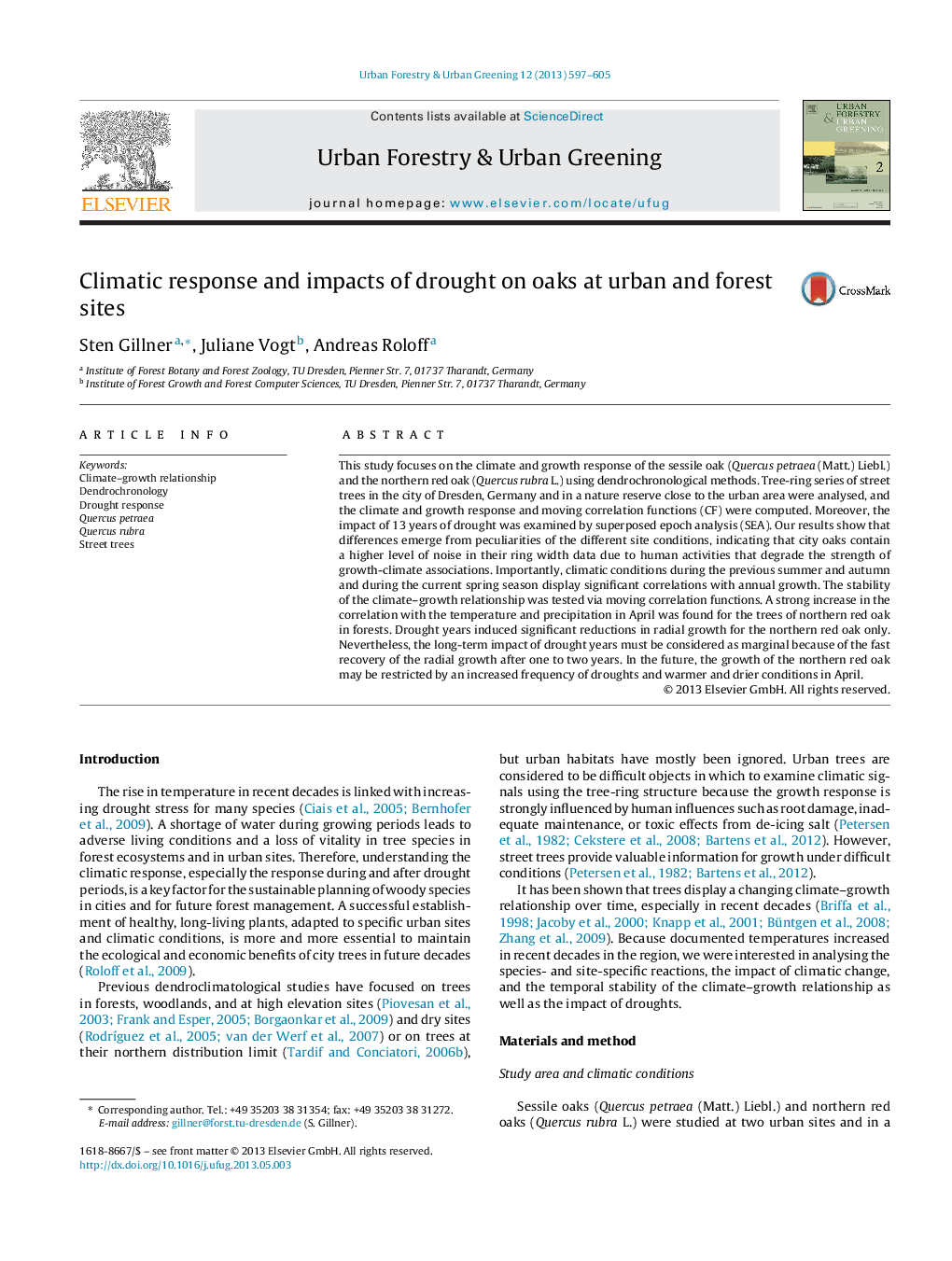| Article ID | Journal | Published Year | Pages | File Type |
|---|---|---|---|---|
| 94100 | Urban Forestry & Urban Greening | 2013 | 9 Pages |
This study focuses on the climate and growth response of the sessile oak (Quercus petraea (Matt.) Liebl.) and the northern red oak (Quercus rubra L.) using dendrochronological methods. Tree-ring series of street trees in the city of Dresden, Germany and in a nature reserve close to the urban area were analysed, and the climate and growth response and moving correlation functions (CF) were computed. Moreover, the impact of 13 years of drought was examined by superposed epoch analysis (SEA). Our results show that differences emerge from peculiarities of the different site conditions, indicating that city oaks contain a higher level of noise in their ring width data due to human activities that degrade the strength of growth-climate associations. Importantly, climatic conditions during the previous summer and autumn and during the current spring season display significant correlations with annual growth. The stability of the climate–growth relationship was tested via moving correlation functions. A strong increase in the correlation with the temperature and precipitation in April was found for the trees of northern red oak in forests. Drought years induced significant reductions in radial growth for the northern red oak only. Nevertheless, the long-term impact of drought years must be considered as marginal because of the fast recovery of the radial growth after one to two years. In the future, the growth of the northern red oak may be restricted by an increased frequency of droughts and warmer and drier conditions in April.
